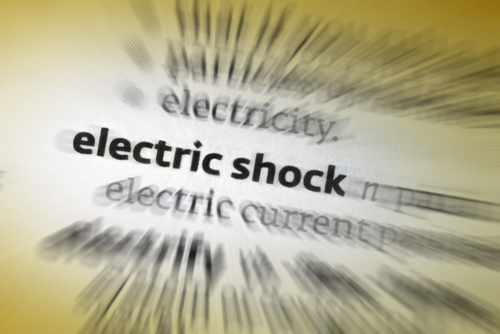There are several types of potential injuries victims can suffer from electric shock, including neurological and orthopedic injuries. It often takes a few months before the full extent of the injury is known. There is also the impact electric shock can have on the brain. Many victims end up with both cognitive difficulties and even post-traumatic stress disorder. If the injury was caused by some type of negligence, a lawyer specializing in electric shock injury can help pursue legal action against those liable.
If you’ve been injured due to someone else’s negligence, our law firm can help you get financial compensation for all your losses. At Shapiro, Washburn & Sharp, we can help you assess your claim and guide you through the legal process to ensure you receive the compensation you deserve. Call us today at 833-997-1774 for a free consultation.
What Is the Difference Between Electric Shock and Electrocution?
When people think of an electric shock injury, their first thought is of the sting or buzz they feel immediately when they come into contact with an uninsulated live wire or switched-on light socket without a bulb. A true electric shock injury, however, often causes external and internal burns and delivers a much greater wallop—even throwing a person several feet through the air. It can also potentially have life-altering effects on the victim.
An electrocution is always fatal. The term “electrocution” inherently implies death, making it distinct from non-lethal electric shock injuries. All electrocutions involve electric shock, but not all electric shocks result in electrocution. The voltage, current, path through the body and duration of exposure typically determine whether an electric shock injury becomes fatal.
How Many People Suffer Electric Shock Injury Each Year?
In the United States, approximately 400 people die from electrocution, and 4,400 are injured each year because of electric burns. According to the U.S. Consumer Product Safety Commission, about 3,000 people go to emergency rooms each year suffering from electrical burns. Our electric shock injury attorneys have successfully represented many electric burn injury victims and understand the devastating impact these injuries can have.
How Are Electric Shock Burns Classified?
The main classes of electric burns are:
High-voltage burns – Any severe electrical burn sustained due to exposure to electrical currents of significant voltage, such as those encountered in industrial or powerline accidents. High-voltage burns can cause deeper tissue damage, affect multiple body systems, and increase the risk of complications.
Low-voltage burns – Low-voltage burns are sustained due to contact with 500 volts of electricity or less. Low-voltage electrical burns are typically associated with household or low-power electrical sources. While generally less severe than high-voltage burns, they can still cause significant tissue damage, especially if contact with the electrical source is prolonged. The extent and severity of low-voltage burns can vary depending on factors like the duration of exposure and the pathway the current takes through the body.
Arc burns – Arc burns, also known as electric arc burns or arc flash burns, are a specific type of burn injury caused by exposure to an electric arc. An electric arc is a high-temperature electrical discharge that occurs when an electrical circuit has an unintended gap. These arcs can produce extremely high temperatures and intense light, resulting in severe burns and other injuries to individuals close to the arc.
Flame burns – This class of burns is sustained when a person comes into contact with any object ignited by a current of electricity. These burns result from electrical faults or malfunctions and are characterized by the intense heat and light produced during the electrical discharge. Electric flame burns can be extremely severe.
What Are Common Electric Shock Injuries?
Electric shock injuries, once considered primarily as immediate physical trauma, are now considered a more intricate injury. Doctors and medical professionals are increasingly recognizing that the consequences of electric shock incidents can be far-reaching, often manifesting in ways that are diverse, delayed, and not always easily understood. Among these long-term effects, cognitive and emotional problems have gained prominence, shedding light on the significant, yet often underestimated, repercussions of such injuries.
Individuals who survive major electric shocks often experience lifelong physical and mental disabilities. Some of the most common include:
- Permanent and intermittent paralysis
- Numbness and tingling along limbs and in hands, feet, fingers and toes
- Headaches
- Altered senses of taste, touch, hearing, and sight
- Muscle weakness
- Joint pain and stiffness
- Cataracts
- Memory and speech difficulties
- Mood swings and personality changes
- Anxiety and depression
- Post-traumatic stress
- Sexual dysfunction
How Can Your Personal Injury Law Firm Help?
If you’ve suffered an electric shock injury due to someone else’s negligence, the first step is to seek medical treatment. Once your immediate needs are addressed, contact an attorney specializing in personal injury cases to discuss your options.
At Shapiro, Washburn & Sharp, we have decades of experience handling personal injury claims. We understand how to navigate the legal process and work with you to maximize the value of your case. Call us at 833-997-1774 to schedule a free consultation, and let us help you get the compensation you deserve.
